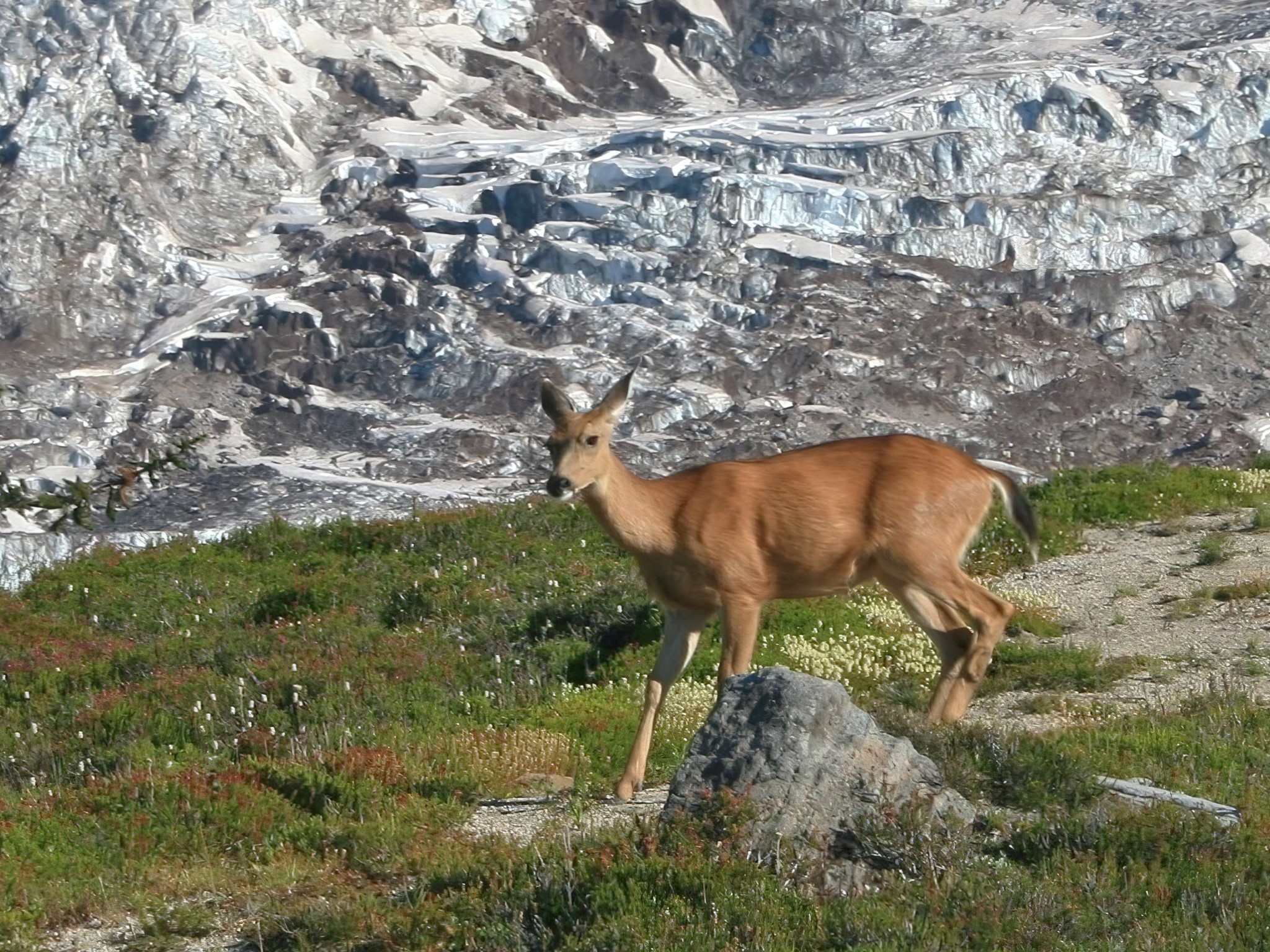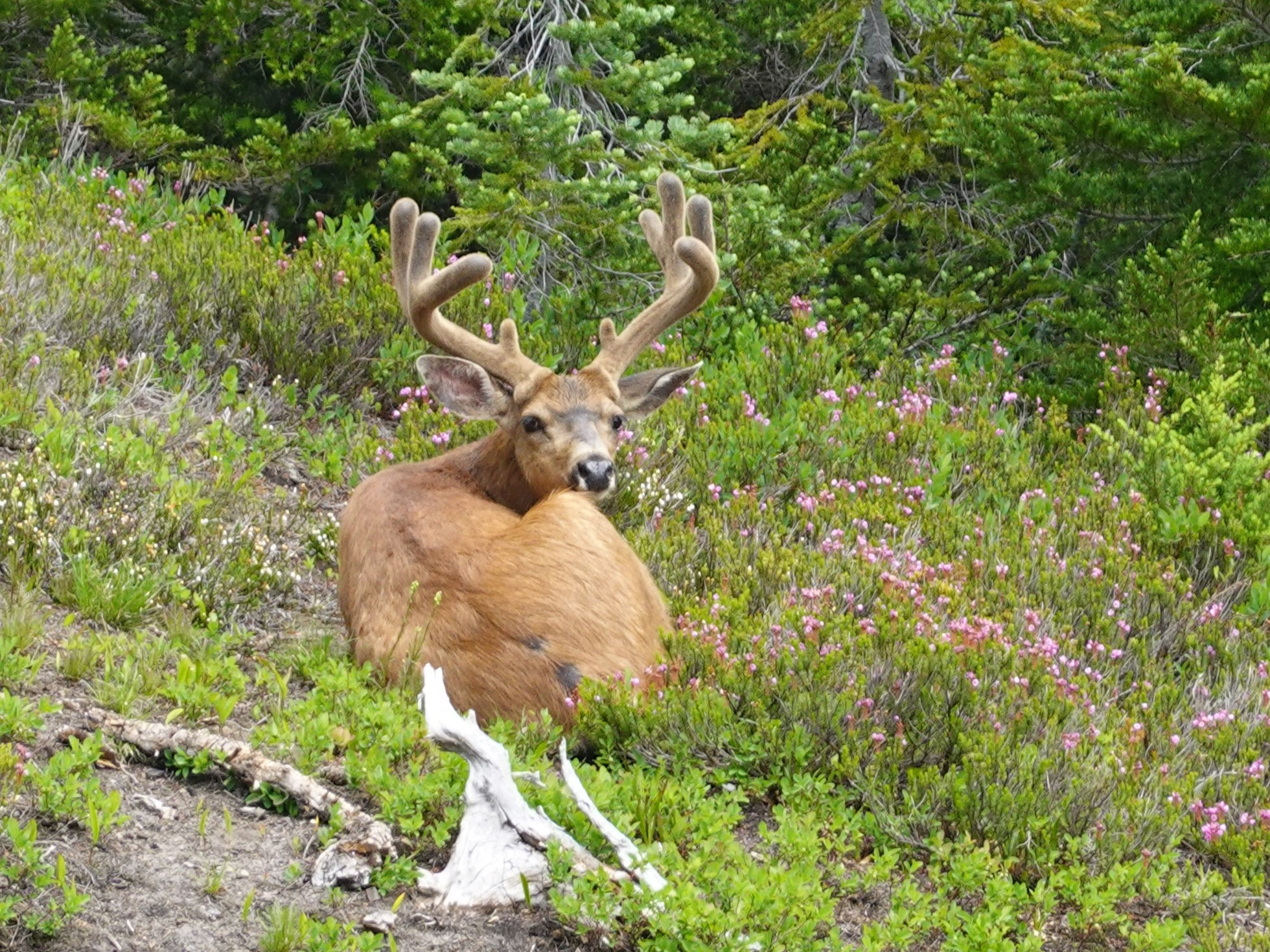Black-tailed Deer
Deer are often encountered along forested Rainier trails, especially if you hike at dawn or dusk when they are most active. They prefer the edges of forests where they can access grasslands and underbrush for feeding as well as cover for hiding and sheltering from bad weather. In summer, bucks move to higher subalpine regions while does and fawns stay at lower elevation.
They eat a wide range of grasses, ferns, shrubs such as salal and huckleberry, and twigs. It's a diet that tends more toward the delicious end of the spectrum in summer versus tough and woody during winter.
Columbian black-tailed deer are a subspecies of mule deer found west of the Cascades crest. They have all-black tails. On the eastern side of Rainier you may find other mule deer, which as far as I can tell are identical except that their tails are white with black tips.
All mule deer have large mule-like ears which they can move independently. This is undoubtably useful for focusing on any concerning sounds, but more importantly it's incredibly cute when they are listening inquisitively to a passing hiker!
Deer communicate through scent glands on the lower part of their legs, which can produce alarm scents, leave a scent trail where a deer has travelled, and identify individuals.




